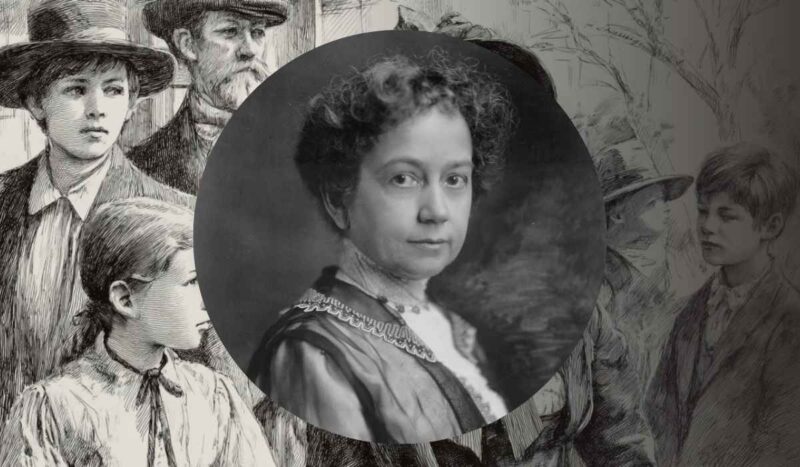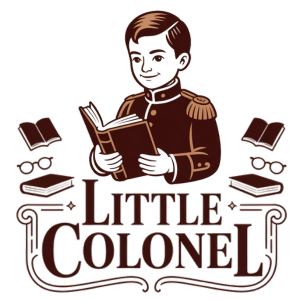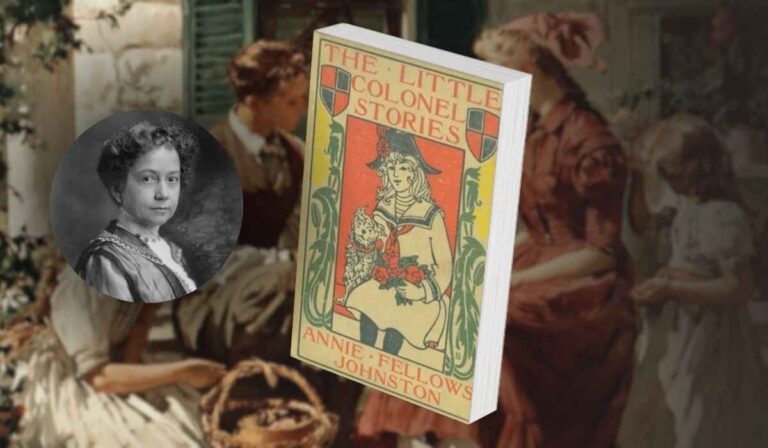Published in 1895, The Little Colonel opened a new chapter in American juvenile fiction with its spirited protagonist, Lloyd Sherman. Set in post-Civil War Kentucky, the story captures the tensions and affections of a Southern family reeling from generational pride.
Its influence extended through more than a dozen sequels, shaping an entire series adored by young readers.
In 1935, Shirley Temple’s portrayal of Lloyd in the film adaptation brought the character renewed fame, securing a lasting place in popular culture.
The story’s themes of reconciliation, class, and moral development continue to resonate with scholars and readers who appreciate its portrayal of Southern values and early American life.
Plot Overview of The Little Colonel
life. The story revolves around young Lloyd Sherman, nicknamed “The Little Colonel,” whose fiery temper and strong will mirror the traits of her proud grandfather, known as the Old Colonel.
Conflict between the two forms the emotional core of the narrative, illustrating the tension between generations shaped by differing ideals and experiences.
Lloyd’s energy and bold personality make her a captivating protagonist. Her behavior often challenges the expectations placed upon her as a child of Southern aristocracy.
As the story progresses, she learns humility, compassion, and self-control, qualities that allow her to reconnect with her grandfather and mend the fractured family ties. Readers follow Lloyd’s transformation as she matures, gaining wisdom without losing her independence.
Mom Beck, a devoted African American servant in the Sherman household, provides another perspective on loyalty and cultural dynamics during the postbellum period.
Her role represents both the affection and inequality that characterized relationships between white families and their Black servants at the time.
Through her patience and moral strength, Mom Beck becomes an anchor of stability within the household, reflecting the complex racial hierarchies of the era.
- Pewee Valley, Kentucky, capturing Southern elegance mixed with old family traditions.
- Main Characters:
- Lloyd Sherman – spirited and headstrong, embodying pride and courage.
- The Old Colonel – proud and reserved, symbolizing the old order of Southern honor.
- Mom Beck – loyal, kind, and wise, highlighting social contrasts of the time.
- Generational and emotional struggles between pride and forgiveness.
- Mutual respect and love achieved through emotional growth and self-awareness.
At its heart, the novel tells a story about reconciliation, family pride, and the pursuit of virtue. Emotional growth replaces arrogance, and affection triumphs over resentment.
Themes and Social Commentary
View this post on Instagram
Southern pride and honor define much of the book’s tone. Johnston portrays an aristocratic society deeply rooted in customs and lineage. Every character carries an awareness of reputation and duty, revealing how social order guided behavior in the Old South.
Class, tradition, and personal dignity serve as the foundation of the story’s moral landscape.
Family reconciliation emerges as the emotional center. Lloyd’s evolving relationship with her grandfather represents more than a family bond, it mirrors the generational healing of a region still marked by division and pride. Forgiveness becomes the pathway toward renewal, transforming cold formality into genuine affection.
Race and class receive considerable attention through daily household life. Characters such as Mom Beck expose the inequalities of the time while embodying resilience and devotion.
Her presence not only enriches the story but also invites readers to consider the social boundaries and silent sacrifices embedded in Southern domestic life.
Moral instruction underpins the entire narrative. Johnston’s goal was not merely to entertain but to teach young readers values of patience, respect, and good manners. Every conflict carries an ethical lesson designed to shape character and promote virtue.
Through these intertwined themes, The Little Colonel serves as both a family story and a cultural study of post-Civil War Southern ideals.
Reception and Cultural Legacy
Upon its release in 1895, The Little Colonel quickly became one of the most beloved works of juvenile fiction in America. Young readers were drawn to Lloyd Sherman’s fiery independence, while parents appreciated the story’s strong moral framework.
Success led to an entire series of sequels following Lloyd’s growth and adventures into adulthood.
Over one million copies were sold, and translations spread the novel’s influence internationally. Its popularity eventually attracted Hollywood, resulting in the 1935 film adaptation starring Shirley Temple and Lionel Barrymore.
The movie expanded the book’s audience, turning Lloyd Sherman into a household name. Pewee Valley, the real community that inspired Johnston’s fictional setting, became a destination for literary enthusiasts who sought to see the environment that shaped the story.
Educators and parents valued the book for its moral and social lessons. It was often included in reading lists to teach proper behavior, gratitude, and respect for elders.
In academic circles, the novel continues to hold importance for its portrayal of Southern identity, gender expectations, and class dynamics.
- Over one million copies sold, with numerous sequels.
- The 1935 Shirley Temple movie brought renewed recognition.
- Pewee Valley is celebrated as the inspiration for the story’s setting.
- Frequently used in early 20th-century classrooms for moral instruction.
- Scholarly Value: Studied today for its insight into gender roles and Southern society.
Through its lasting popularity and historical value, The Little Colonel remains a cornerstone of early American youth literature, bridging entertainment with moral education.
About the Author: Annie Fellows Johnston

| Aspect | Details |
|---|---|
| Birthplace | Evansville, Indiana, 1863 |
| Early Life | Raised in a creative and faith-centered household |
| Career Start | The former teacher was encouraged by her husband to write |
| Major Works | Big Brother (1894), The Little Colonel (1895), and over 40 subsequent titles |
| Literary Style | Focused on morality, manners, and family unity |
| Later Life | Settled in Pewee Valley, Kentucky, where she wrote until her death in 1931 |
Annie Fellows Johnston, born in 1863 in Evansville, Indiana, grew up surrounded by faith, imagination, and storytelling. Early loss of her father deeply shaped her empathy and interest in emotional relationships, a recurring theme throughout her writing.
Her upbringing in a religious household encouraged introspection and creativity, traits that would later define her literary style.
Before dedicating herself to writing, Johnston worked as a teacher. Encouragement from her husband led her to pursue a professional literary path.
Her first novel, Big Brother (1894), earned modest praise, but her follow-up, The Little Colonel (1895), secured her reputation as a leading voice in children’s literature. Her talent for weaving moral lessons into relatable characters gave her stories a sense of authenticity and warmth.
Pewee Valley, Kentucky, became her home and primary source of inspiration. Many of her stories are set in this environment, depicting family relationships, community life, and personal virtue.
Her literary career included more than 40 works, each designed to inspire kindness, responsibility, and moral reflection in young readers.
Her work remains influential for its contribution to early American moral fiction, offering insight into societal expectations and the formative role of literature in shaping young minds.
The Bottom Line
The Little Colonel endures as a defining example of Southern children’s fiction. Its blend of moral teaching, family drama, and cultural commentary ensures its continued relevance within American literature.
Annie Fellows Johnston’s work not only entertained young readers but also shaped standards of behavior and virtue during a transformative era.
Interest in her stories persists through historical studies and film retrospectives that celebrate her influence. The character of Lloyd Sherman remains an enduring symbol of courage, growth, and reconciliation.
Through her spirited nature, audiences gain insight into the values that shaped early American society and the moral education of its youth.

